There have only been two times this summer when I stood in absolute awe as I looked up at the night sky—during our early June trip to the Boundary Waters and when I was in South Dakota last month. Both times the sky was crystal clear, the light pollution minimal to none, and the star show dazzling. Seeing the stars on those resplendent nights makes one appreciate the darkness. It reveals what many of us normally don’t see (the Milky Way and a myriad of other stars.) Some who live in cities (or don’t look up) may never see the spectacular wonder of our night sky.
What was also spectacular when I was in South Dakota were the edges of night—the dusk and dawn times. At this time of year those transition times slip in earlier in the evening and later in the morning. We are gently reminded that we are also progressing through the seasons.
There was a Mourning Dove, sometimes two, who sat for long stints of time on the western end of my Mom’s barn roof. The Dove was always there at evening time, her gray breast feathers rosy-colored in the fading sunshine. What was she waiting for or looking at?
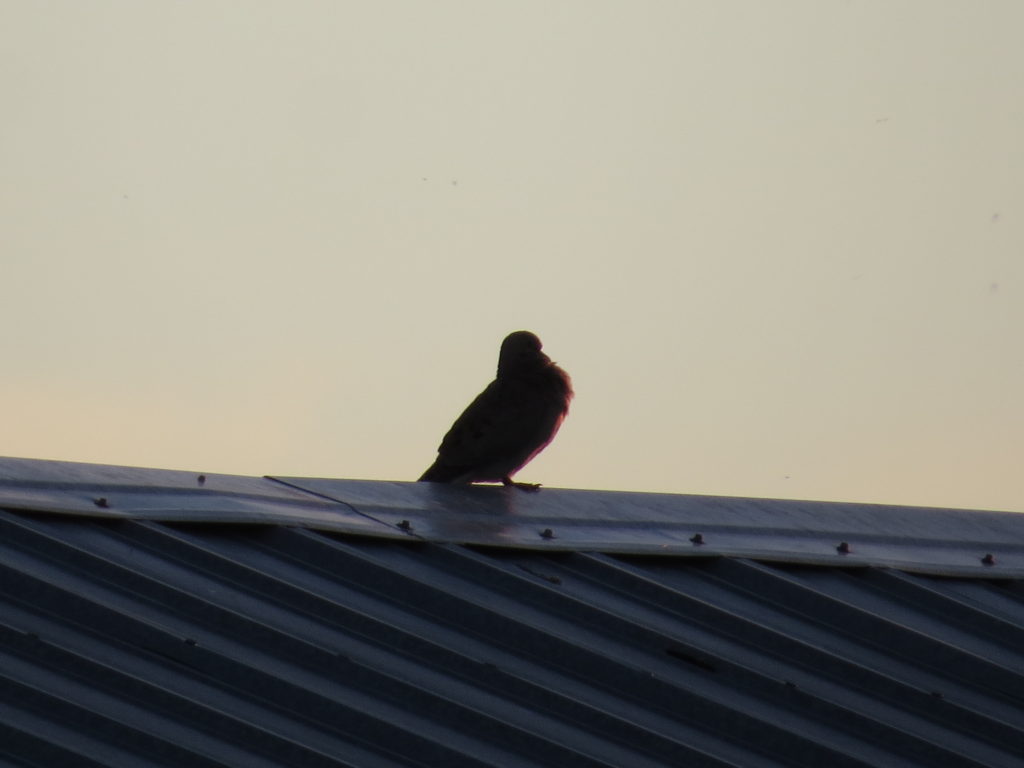
As the sun set, the moon rose in the eastern sky, a large, spotted, golden orb peeking out from behind the dark trees.
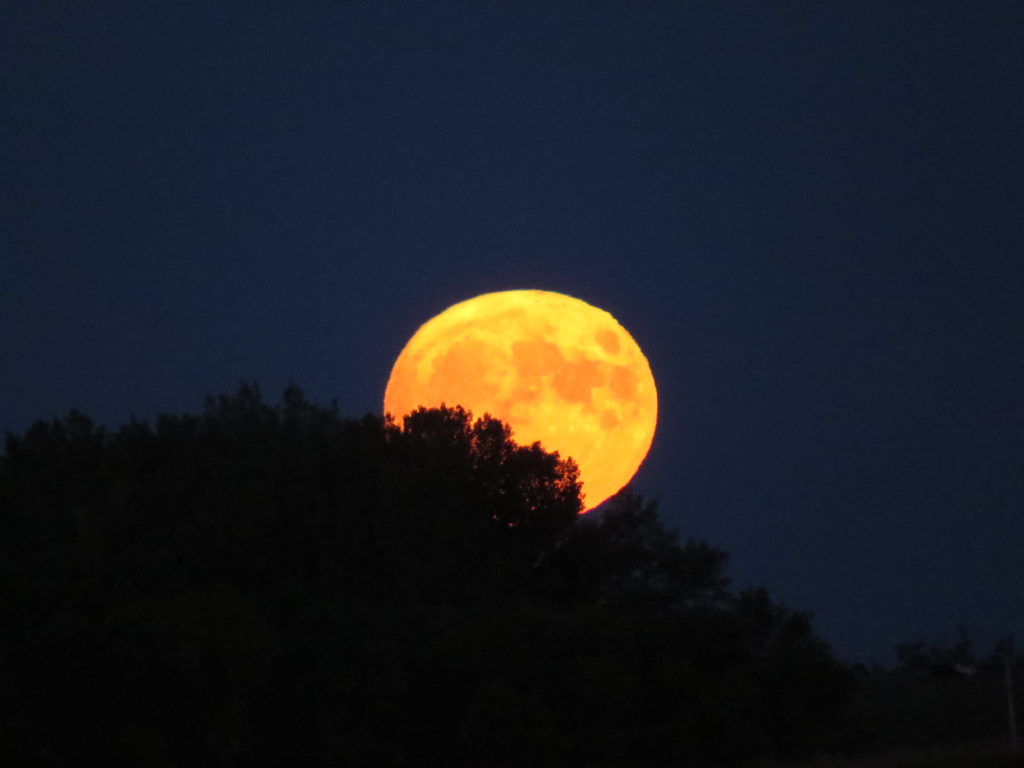
It ‘rose’ quickly when at the horizon…
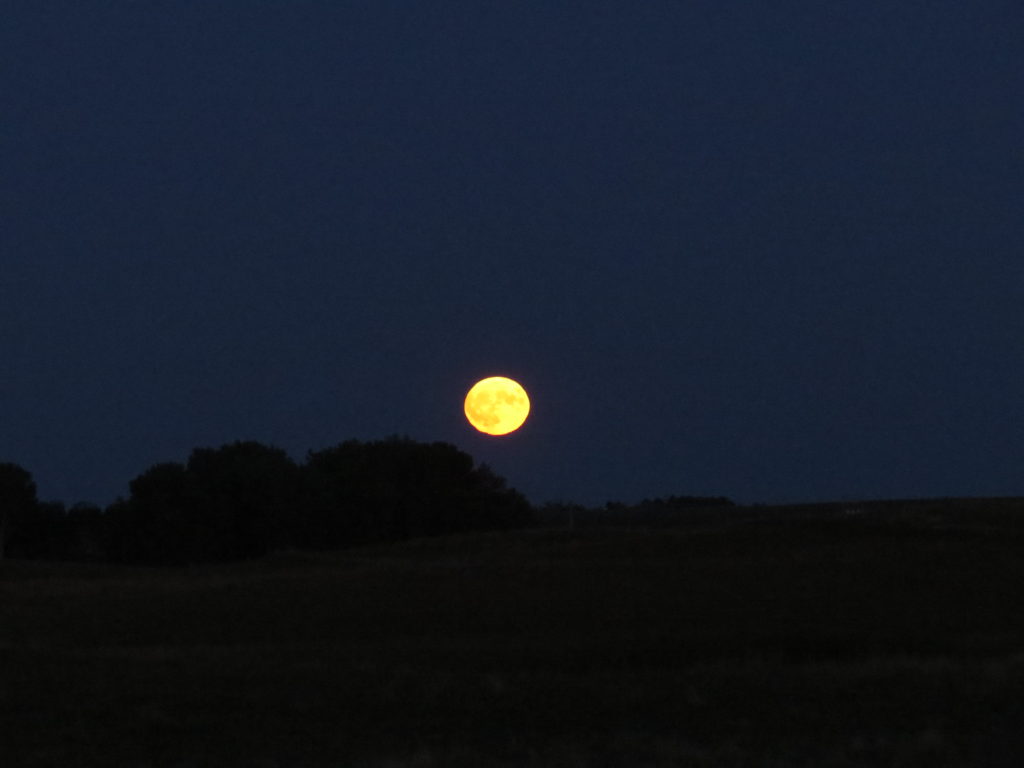
…and hours later lit up the landscape, as a misty fog crept across the pasture when the warm rain-soaked ground met the cool, clear moon-soaked air.
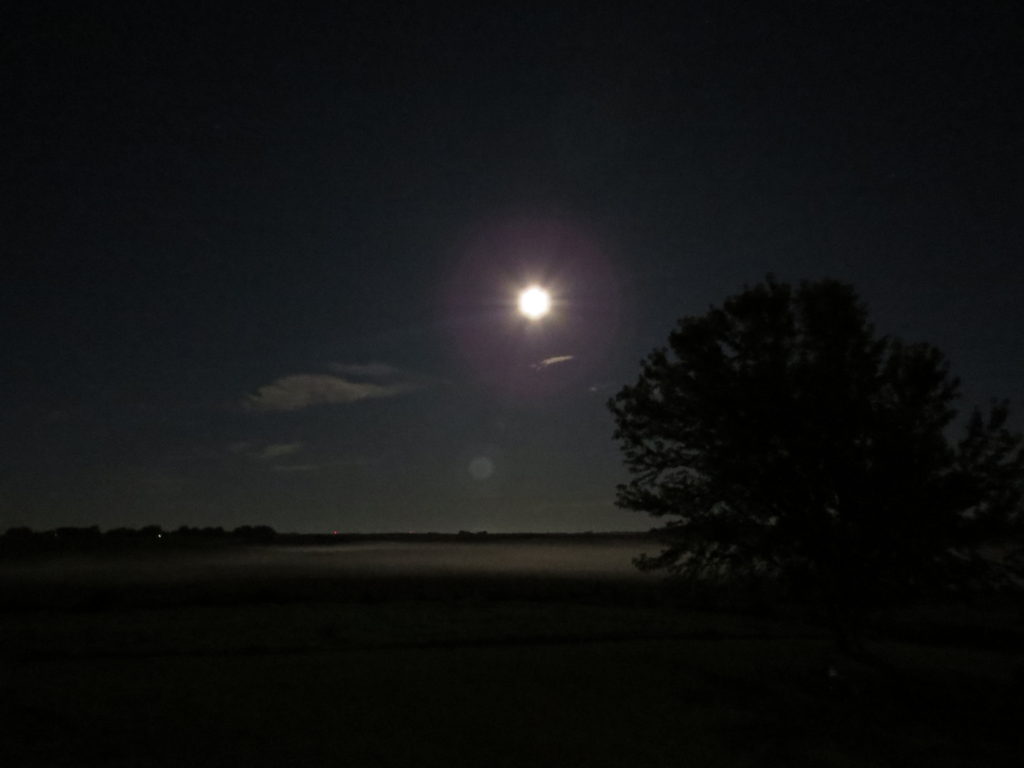
Two nights later, dusk was a rainbow of colors, transforming the light of day to the darkness of night with all the beauty and hope an arch of prismatic light portrays after a storm.
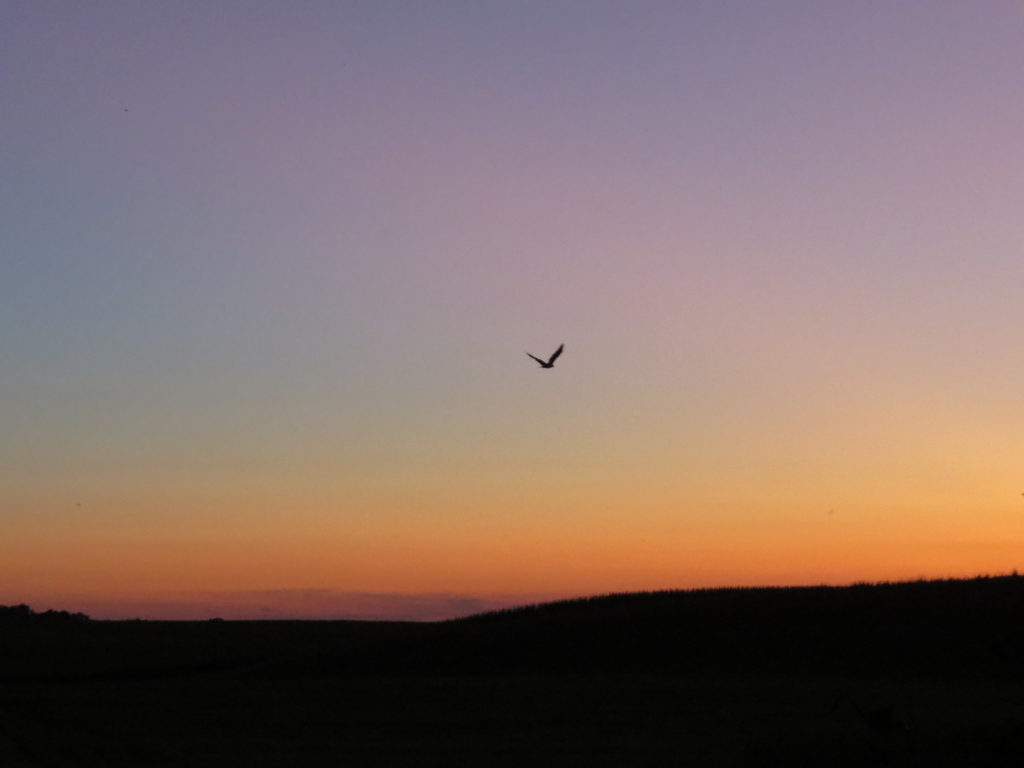
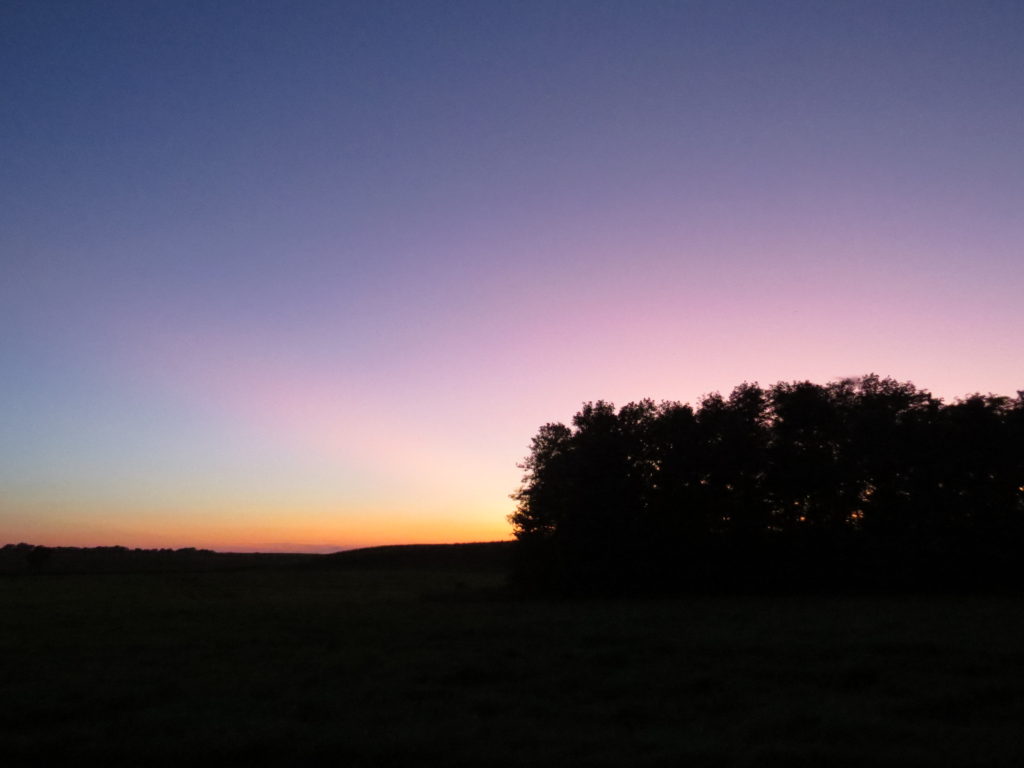
Dawn is the other edge of night that shifts us from stars and sleep to light and ‘seeing.’ The morning after the rainbow sunset was just as spectacular in a more muted, pastel way. It embodies the trite phrase ‘Good morning’ with a visceral feeling that this is indeed a new and good day.
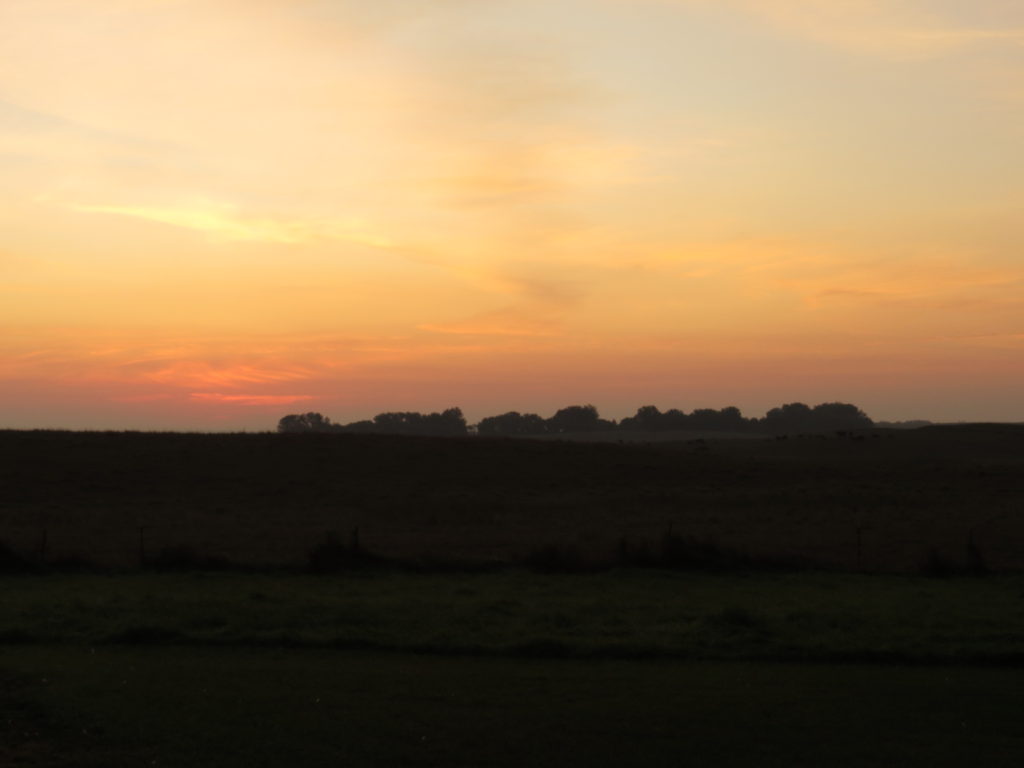
As the light lifted the veil of darkness, I could see what had not been seen just moments before. The cattle were stirring and standing from their night of slumber on the hill.
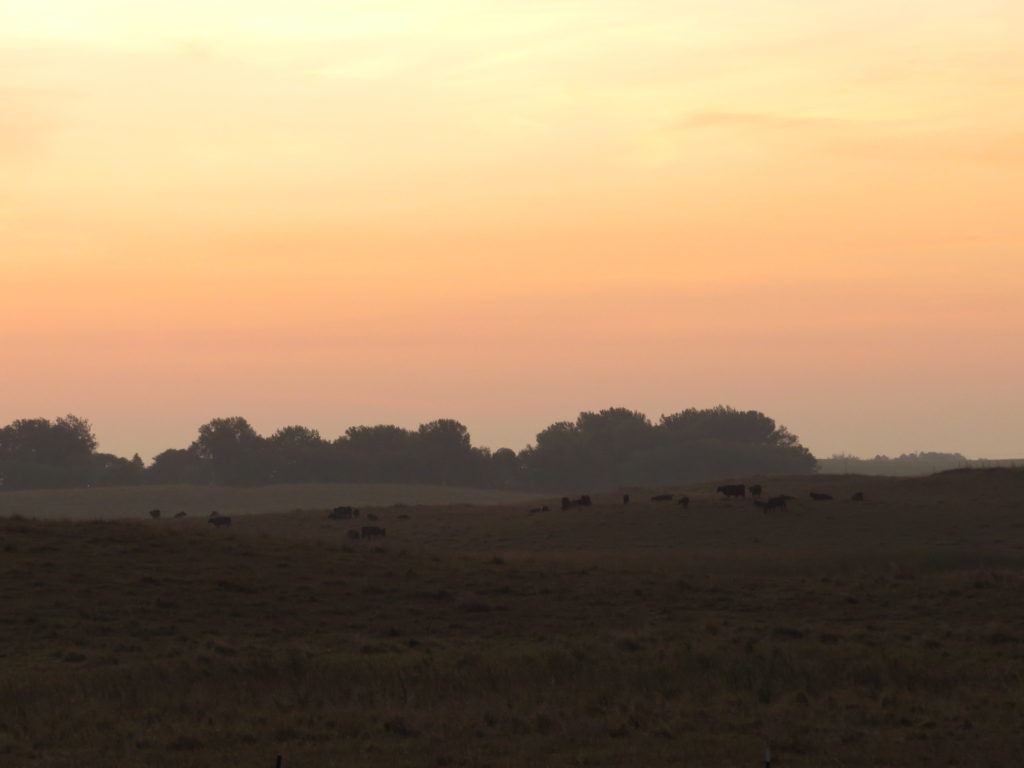
Just before the Sun rose from the brilliant orange morning sky, the western-sky Moon was still the shining one. He graciously handed the baton-of-brightness to the Sun.
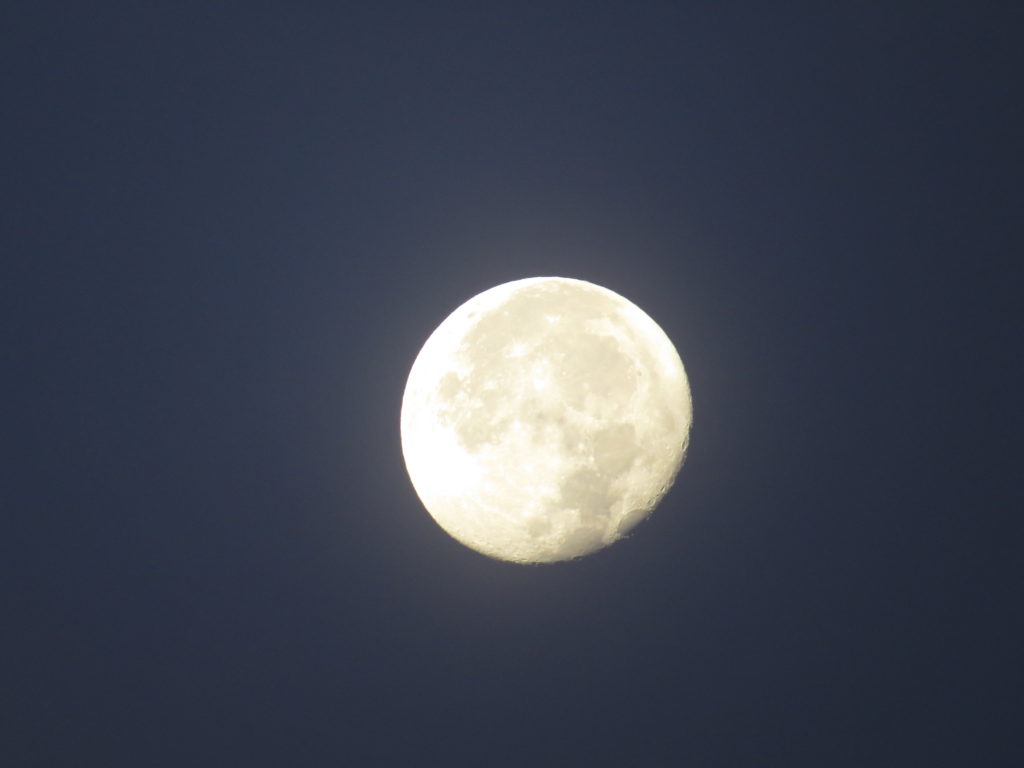
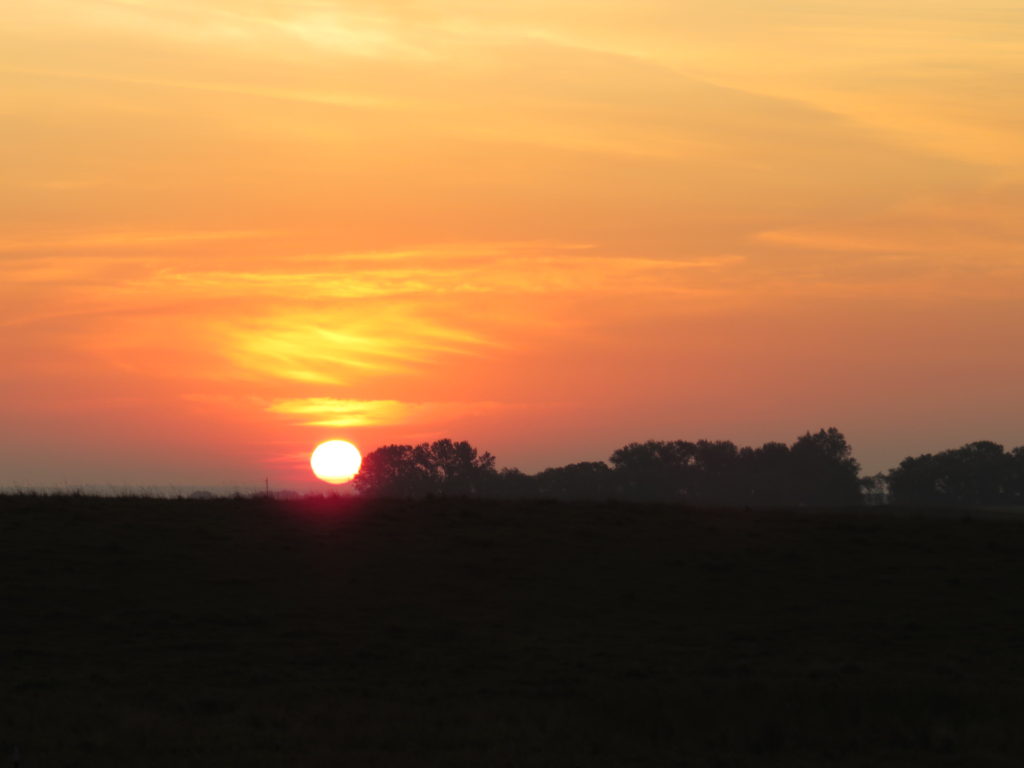
Oftentimes, when we awake for the day, we forget about the rest of the natural world that is also following the rhythms of Mother Nature. Being around animals, whether cows and calves in the pasture or cats and dogs in our homes, tunes us in to a bigger, wider world beyond ourselves. The cows stand and stretch, the calves seek their mothers’ udders, the bull bellows a low, rumbling call.
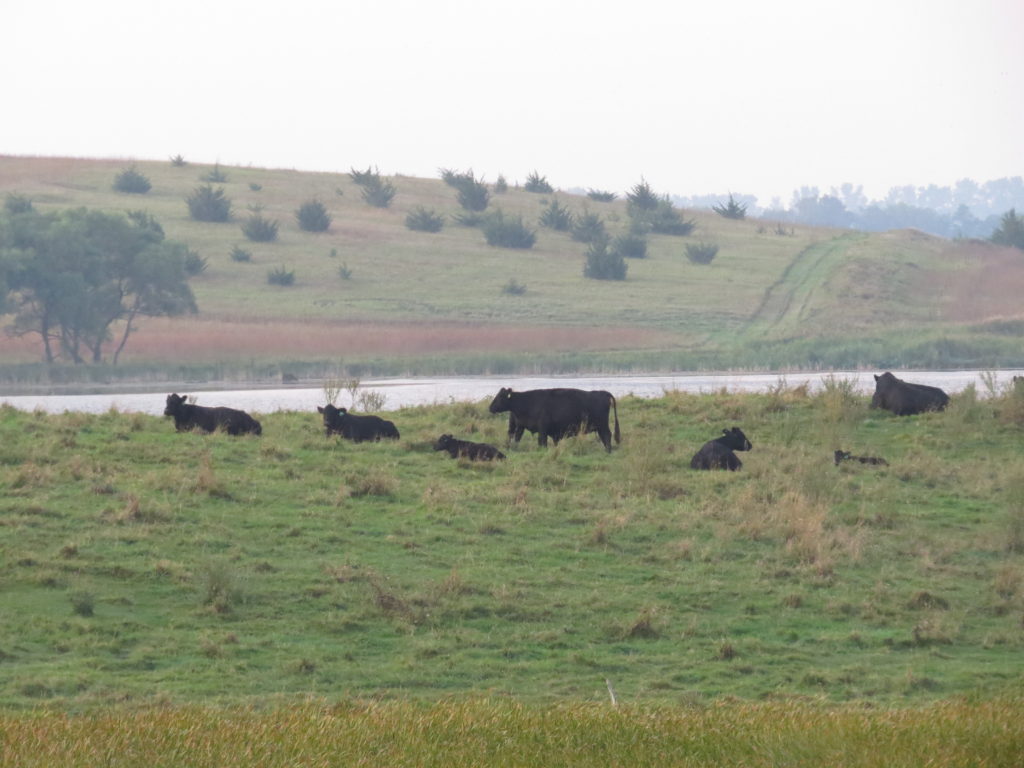
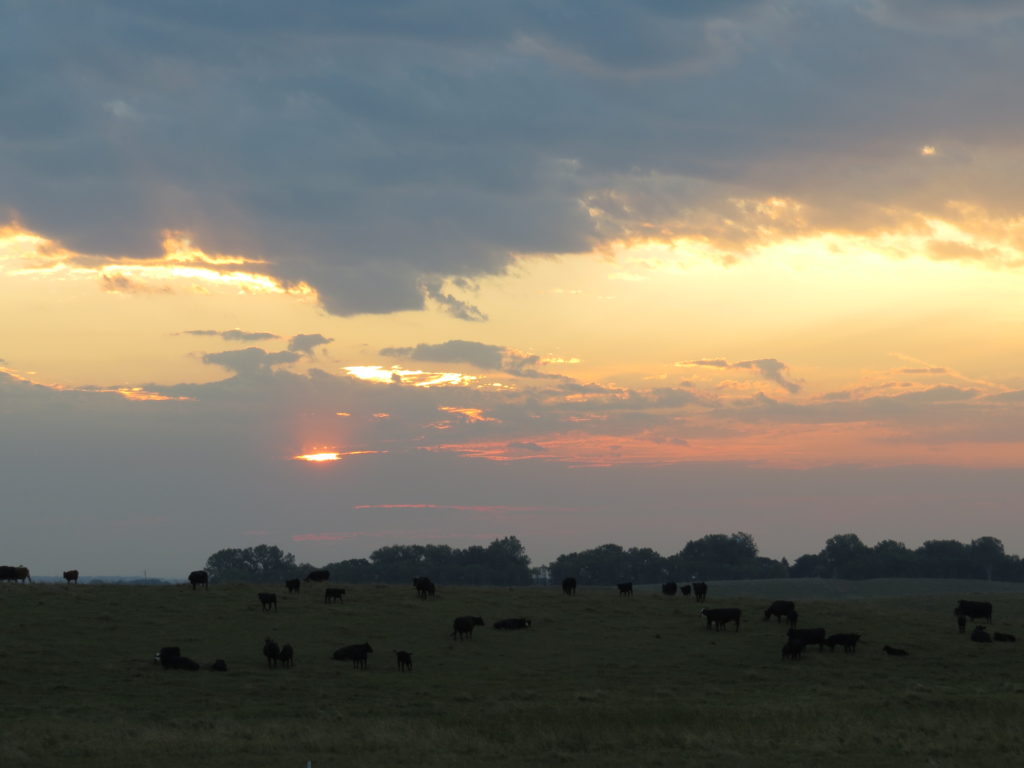
How fortunate we are to experience the full glory of a sky full of stars with a wide white wash of Milky Way stars painted across the darkness. In that darkness, we see less, need to trust more, and attune to our hearing, our touch, and our intuition. Dawn and dusk, the edges of night, are also the edges of day. Sundown leads us and all animals to our nocturnal natures—sleep and rejuvenation or nighttime hunting and activity. While the night veils our vision, it allows for transformation through our dreams and introspection—like how the moon changed the look of itself and that of the landscape as it progressed across the sky. Then daybreak reveals to us what we previously didn’t see, what was obscured by darkness. It all works together in the passages of our days for our ‘good mornings’ and ‘good nights.’
As one of those “who live in cities (or don’t look up),” I get only glimpses of the light you describe so beautifully here. Thank you for this post and all your posts that blend photos and words evocatively.
Thank you, Jim. Glad I can share some of this with city dwellers.
I so needed to read this today; it’s been a “busy-head” time for me and now I feel more peaceful, less urgent. Soon I will get outside into this SUNNY day to absorb some of the light. I don’t want to miss it!
We need the edges in order to get to the stars or the sun!